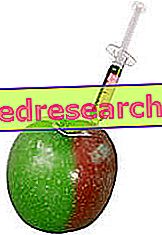By Dr. Dario Mirra
Functional training, now a concrete reality in the fitness world, sought everywhere and everywhere present. Certainly inflated and in some ways still unknown, as it seems to be useful to do a little work with kettlebells or on a proprioceptive platform, and here is a lesson in functional training.

So what would this functional training have different?
If we look at the real function, we should not talk about simple training, our first function should be the common gestures that are necessary for life itself, in everyday life, where movement is an integral part of it.
So before training you should first of all educate to move.
Take care first to perform common, normal gestures, then think about training. We must try as many motor experiences as possible, then think about making 100 kg of squats. You should be able to have good posture, then think about taking the Step course. Before we want to do a 2 hour run, we first think about getting a decent physical condition.
Think of the basic motor skills, assumptions of the movement, divided into 2 groups, depending on the authors:
- conditional abilities: strength, speed, endurance, joint mobility.
- coordination skills: balance, rhythm, differentiation, reaction, orientation.
Think of the motor patterns, essential structures of human motor skills, they can be considered the basis on which to build skills. Let us remember some of the main ones:
- to run
- jump
- to roll
- to crawl
- to launch
- to grab
- hit.
By now schematized from a purely didactic point of view, but perfectly integrated in the practical act, so as to become motor skills. Think about when you are playing a soccer game; The ball arrives, I have to decide, I have to take it, I have to do something. Everything is integrated.
Functional training means, first of all, educating to movement. We should first learn how to do a squat with a barbell and put a little strength, after doing a squat with a bag half full of water and try to stabilize the load and find the balance, indeed even before we should metabolize the basic rudiments of squat technique, to then use various expedients to make it more difficult in its execution.
Instead, following the functional course, I don't even have the basic rudiments of how an acrobat works and I already find myself having to do one with a barbell on it, with 2 unstable platforms under my feet and accelerate as much as possible under the rhythm of the music and of the instructor's incitements.
So an exercise, to be considered functional, what requirements does it need?
According to Vern Gambetta, Colli, Andorlini, the functional exercise must have 3 main components:
- multi-joint.
- multiplanar.
- seeking balance.
As a last step, contextualize the movement.
If I need to jump higher why should I do leg extension?
If I have to pull a stronger punch, what's the point of making a 30 ° bench cross?
If kinetic chains work together in these gestures why do I have to break down the movement? What makes the difference in a professional and amateur gesture is the coordinating aspect of the gesture itself. It is not the muscle that creates the movement but it is a simple and stupid performer of an orderly and modulated gesture at the level of the nervous system, which has now perfected it through continuous repetition.
Because if I walk on a "smooth" surface, I play volleyball on the floor, kick and punch in a ring, to train my balance on unstable surfaces? Working on these "unnatural" surfaces is very far from being functional.
In the rehabilitation field, in the case of any knee injury, for example, can I think of recovering only muscle strength and thinking of being ready to play Rugby? A muscle must first be strengthened, then progressively it must be re-educated to perform the gestures to which it is predisposed, then it must be contextualized to the sporting gesture and in the last phase the actual game can be resumed.
Lifting weights is also part of the functional context, but with the right method. Bodybuilding has "dirtied" the practice of weight lifting adapted to sports. "Iron" sports are 3: bodybuilding, weightlifing, powerliting. They only share the means they use, the overloads, but they differ enormously in their gestures, work times, load, application of force, recovery ... in short, three different worlds. Making functional training with overloads, needs to know the peculiarities of these three practices and adapt them to what it needs for our purposes.
Training is the implementation of different methods to obtain an optimal performance, it is a gradual and constant growth process, according to the principles of the training methodology, which ranges from the optimal choice of the type of exercise, load modulation and recovery to get the desired end in a rational way and without injuries.



